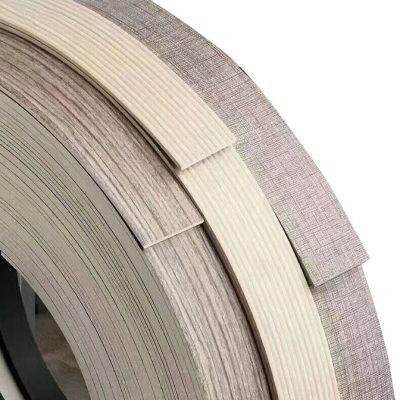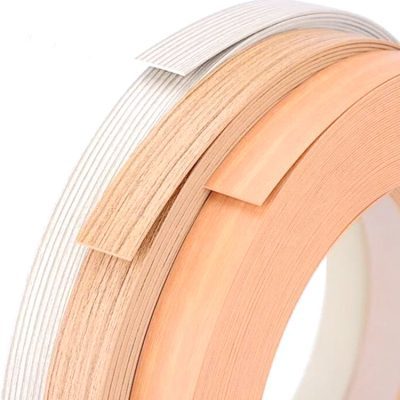Edge banding can be made from various materials, and whether it’s real wood or not depends on the type of edge banding you’re using. Here are some common types:
- Wood Veneer Edge Banding:
- Material: Real wood veneer.
- Description: This type of edge banding is made from thin slices of real wood, typically around 0.6mm to 2mm in thickness. The wood veneer is often applied to a paper or fleece backing for flexibility.
- Usage: Wood veneer edge banding is popular for applications where a genuine wood appearance is desired. It allows for the use of less expensive substrates like MDF or particleboard while maintaining a real wood look on the edges.
- Solid Wood Edge Banding:
- Material: Solid wood.
- Description: Solid wood edge banding is made from strips of solid wood, typically hardwoods like oak, maple, or cherry. It is thicker than wood veneer edge banding, often ranging from 5mm to 10mm or more.
- Usage: Solid wood edge banding is used when a thicker and more substantial wood edge is desired, such as on high-quality furniture or countertops.

- PVC Edge Banding:
- Material: Polyvinyl chloride (PVC).
- Description: PVC edge banding is made from a plastic material (PVC) that is extruded into thin strips. It is available in various colors, patterns, and finishes.
- Usage: PVC edge banding is commonly used for a cost-effective and durable solution. It is often applied to furniture made from engineered wood products like particleboard or MDF.
- ABS Edge Banding:
- Material: Acrylonitrile Butadiene Styrene (ABS).
- Description: ABS edge banding is made from a thermoplastic polymer known as ABS. It is similar to PVC edge banding but is considered to be more environmentally friendly.
- Usage: ABS edge banding is used in a variety of applications where a durable and impact-resistant edge is required.

- Melamine Edge Banding:
- Material: Melamine-impregnated paper or fabric.
- Description: Melamine edge banding is typically made from melamine-impregnated paper or fabric, which is applied to the edges of particleboard or MDF.
- Usage: Melamine edge banding is commonly used in furniture and cabinet applications where a durable and easy-to-clean surface is desired.
In summary, edge banding can be made from real wood (wood veneer or solid wood) or synthetic materials like PVC, ABS, or melamine. The choice of material depends on factors such as the desired appearance, cost, durability, and application requirements.


